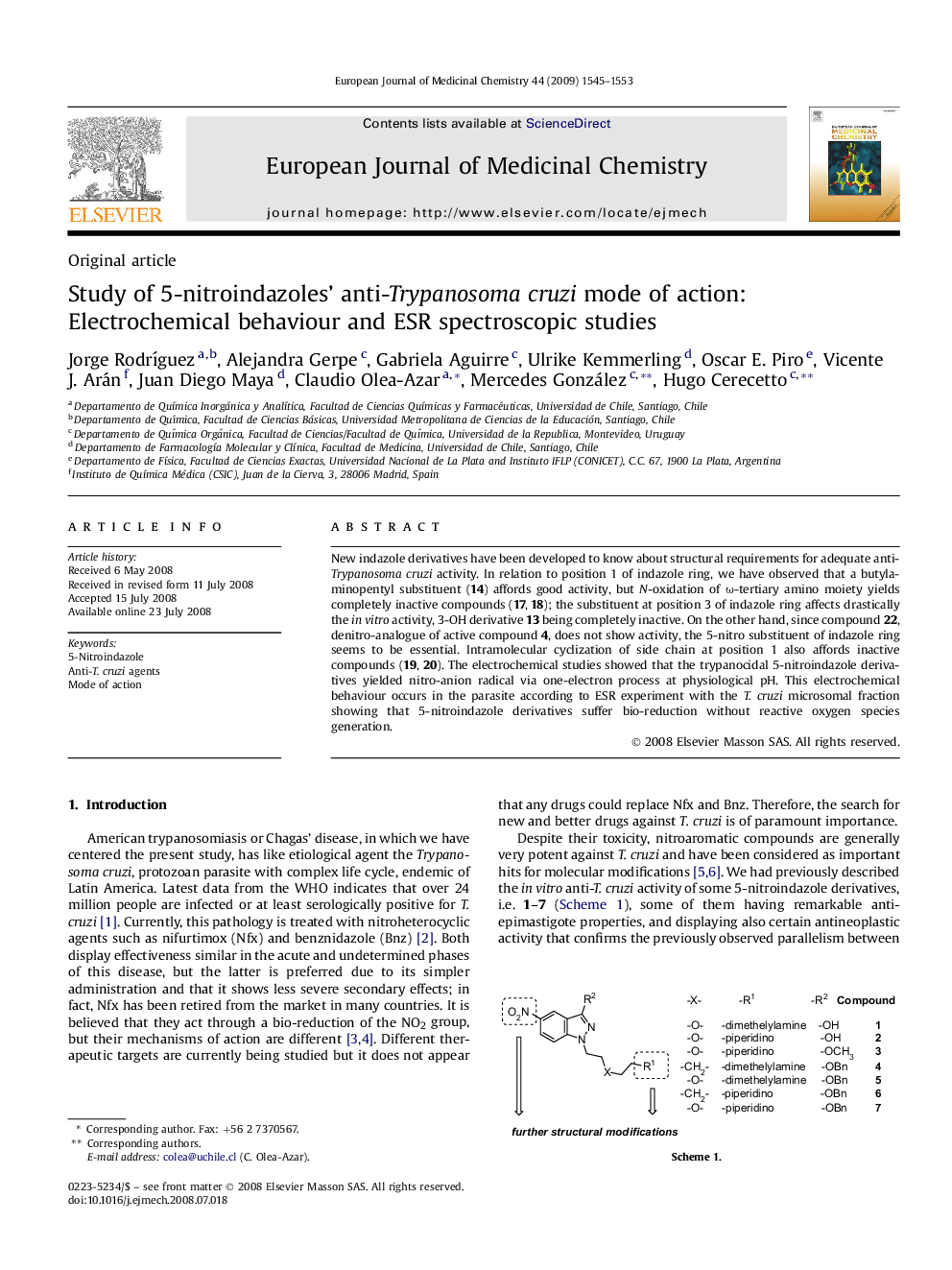| Article ID | Journal | Published Year | Pages | File Type |
|---|---|---|---|---|
| 1395181 | European Journal of Medicinal Chemistry | 2009 | 9 Pages |
New indazole derivatives have been developed to know about structural requirements for adequate anti-Trypanosoma cruzi activity. In relation to position 1 of indazole ring, we have observed that a butylaminopentyl substituent (14) affords good activity, but N-oxidation of ω-tertiary amino moiety yields completely inactive compounds (17, 18); the substituent at position 3 of indazole ring affects drastically the in vitro activity, 3-OH derivative 13 being completely inactive. On the other hand, since compound 22, denitro-analogue of active compound 4, does not show activity, the 5-nitro substituent of indazole ring seems to be essential. Intramolecular cyclization of side chain at position 1 also affords inactive compounds (19, 20). The electrochemical studies showed that the trypanocidal 5-nitroindazole derivatives yielded nitro-anion radical via one-electron process at physiological pH. This electrochemical behaviour occurs in the parasite according to ESR experiment with the T. cruzi microsomal fraction showing that 5-nitroindazole derivatives suffer bio-reduction without reactive oxygen species generation.
Graphical abstract New indazole derivatives have been developed to know about structural requirements for adequate anti-Trypanosoma cruzi activity. The electrochemical studies and ESR experiment, with the T. cruzi microsomal fraction, showed that the 5-nitroindazole derivatives suffer bio-reduction without reactive oxygen species generation.Figure optionsDownload full-size imageDownload as PowerPoint slide
